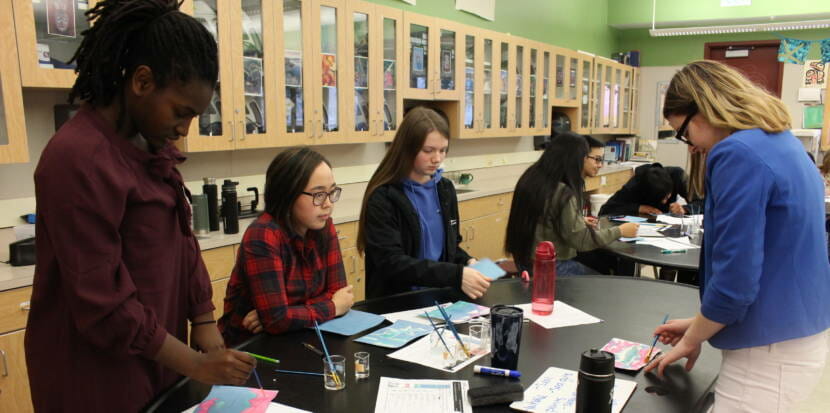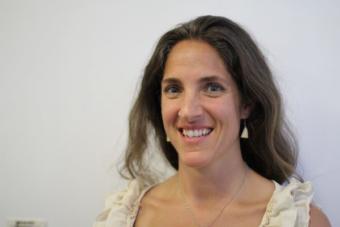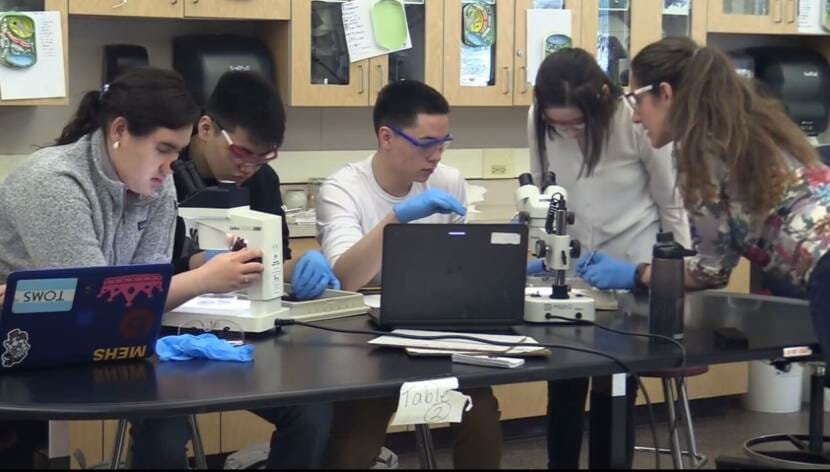
As Americans watched the presidential race draw to an end over the last few months, an educator in Sitka was quietly celebrating her own executive victory. Earlier this year, Mt. Edgecumbe High School’s Chohla Moll won one of the most prestigious awards a science teacher in the United States can get.
Chohla Moll, whose Tlingit name is Kookaxk’w, is a science teacher at Mt. Edgecumbe High School in Sitka. Her teaching style is innovative and energy-filled. Her students have done everything from watershed restoration research to cognitive studies of their classmates’ cellphone use to examining the impact of microplastics on species in Sitka Sound.
Now she’s being nationally recognized for her work. Earlier this year, she was awarded the Presidential Award for Excellence in Mathematics and Science Teaching. A fellow science teacher in Anchorage nominated her, and the application process was rigorous.
“You have to make a video of yourself teaching. It has to be non-edited,” she said, speaking to KCAW in an interview in October. “You have to do the full lesson plan and you have to have a ton of questions that you have to answer.”
Moll decided to record herself leading students in a herring dissection, incorporating both medical scalpels and traditional knowledge. She began the lesson by singing a Tlingit herring song with students. Then she walked students through the process of examining different parts of the fish under a microscope.
The relevance of herring goes beyond the dissection tray: Herring is a traditional food for Indigenous peoples of Southeast Alaska and is traded to many of the communities Mt. Edgecumbe students hail from. Its future as a subsistence resource hangs in the balance, between state fisheries management, market demands and climate change.
“What did Alaska Department of Fish and Game tell us, in the radio stories that we listened to, the age class of these herring this year?” she asked students toward the end of the lesson. “They said that the population of herring we have are about three years old. So does that mean some of the fish can be older and some of the fish can be younger?”

Moll said she applied for the award hoping to bring her students’ stories to educators around the country.
“I felt like the story my kids have to tell in the world is an important story. I feel like the cultural component and the cultural connection that we have to place is important,” she said. “And I wanted to share that story to a larger audience.”
The process pushed her to reflect on why she does what she does, and how she can do it better.
“And how often do we get an opportunity to really think about that in our profession?” she asked. “So by the time I submitted it I was like, ha! I’ve already won! I’m done.”
In July she found out that she did, in fact, win. The award is one of the highest distinctions a science teacher in the United States can receive.
The ceremony was a bit different. Rather than flying out to DC, she joined the other 106 winners of the math and science prizes in a virtual awards ceremony, via Zoom.
Her classroom is a little different too, these days. The herring lesson, filmed in 2019, feels a world away. No one’s wearing a mask, students are crowded above microscopes and Moll is flitting around the room from one table to the next. Today, pulling off a lab with high school students is much harder. There are new safety concerns that an eye-washing station won’t remedy — COVID-19.
“I have a box. I have a box in the front of my room that’s taped off so I have six feet of distance from students. And I have a shield. Fans in my room,” she said. “During ‘Medium risk’ I’m supposed to stay in my box, and I’m not supposed to leave my box.”

MEHS teacher Chohla Moll (far right) works with students to determine the age of herring by examining their scales under a microscope. (Video capture courtesy of Chohla Moll)
Like teachers everywhere, Moll is figuring out ways to move forward, even with the challenges the coronavirus has created for her classroom. She’s reworking lesson plans, finding technical workarounds and figuring out how to give instructions differently, with social distance in mind.
“I can’t touch their microscopes! So it’s a practice in patience,” she said. “But it’s better because I’m not doing it for them. They have to do it themselves.”
Getting her classroom to a place where students are operating their microscopes with confidence while she stays behind her plastic shield takes more work and planning on her part than it used to. But she said that’s all worth it when she thinks about what Mt. Edgecumbe students are giving up this year to peer through those microscopes.
“I have students who come here from all over the state. And I value their commitment in traveling so far away from home,” she said. “I feel like my job is to make that sacrifice worth it. I will also say that my kids are here right now in a pandemic for a reason. You don’t travel thousands of miles away from home to wear masks in a room unless you want an education.”
“And that’s why I’m here,” she said.
Moll hopes to travel to DC sometime next year to receive formal recognition and to meet the new president.
